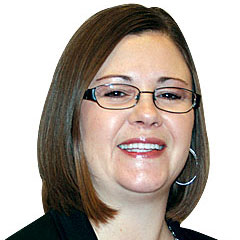
In skilled nursing facilities, there is a high demand for data that can be leveraged to improve clinical and financial outcomes.
The COVID-19 pandemic has reinforced the idea that caregivers’ time is precious and best spent with patients rather than on added distractions or administrative responsibilities. The need to work smarter, not harder, has turned clinicians onto predictive data and analytics to protect bottom-line results and, most importantly, improve quality of care.
Here are five strategies for successfully managing risk and improving quality of care.
1. Use data to discover effective ways to lower hospital readmissions
Lowering hospital readmissions has always been front and center for long-term care providers and a high priority for the Centers for Medicare & Medicaid Services. Through CMS’ significant investment in case studies, we’ve seen clear themes that point to the use of data. Successful organizations with the most positive results have all leveraged their EHR to manage quality initiatives.
Rather than rely on past best practices, providers should adopt a renewed approach to leverage data as part of a strategic plan to reduce hospital readmissions. A successful strategy would require access to real-time data that is easy to understand and actionable, such as:
- Resident history prior to hospital admissions
- Medication history
- Risk mitigation factors that can predict incidents tied to readmission, like falls, vitals, comorbidities, and change in condition
- Ability to assess admissions by scoring capabilities and determine a go/no-go admission scenario
Providers with a holistic view of patient data can use it to help reduce hospital readmissions and provide a higher quality of care.
2. Take control of the data you need
As EHR data belongs to the facility, outsourcing data analysis requires an extra level of access before the third party can work, increasing the timeframe for results. Many facility-based softwares now empower organizations to get those same high-level results, without having to create their own sophisticated algorithms.
To use EHR data to make informed decisions, providers need to understand the right type of data. Some important features to look for in EHR software include:
- Access to all resident data with the ability to filter by diagnosis, vitals, orders, notes and assessment data
- Ability to highlight patients who are more at risk or might need extra attention
- Ability to see change in condition to inspire immediate action
- Quality measures to help ensure accuracy in verifying resident information
When it comes to predicting, managing and understanding risks, an organization’s EHR data is a gold mine, and technology has empowered providers to extract that data and make sense of it in a useful way.
3. Prevent health deterioration with predictive data
With the right technology, providers can have a better overview of their patients’ health conditions. By leveraging the analysis produced by in-house software, clinicians can use real-time data to assess risk and predict correlations. The real value of having this predictive data is that it will show what will likely happen and why, so providers can make informed decisions to regulate patients’ health.
4. Improve transition of care coordination
Studies have shown the risk of hospital readmission is consistently higher post-discharge from a facility, an event that providers find most challenging. Coordinating post-discharge care and capturing all critical data during transitions of care gives home care teams a strong start at planning and coordinating care, which ultimately can help prevent hospital readmissions.
Some essential workflows this data can help improve during transitions of care include:
- Building and maintaining a longitudinal care record
- Sharing data with the broader care team and family
- Accessing risk data, schedules, actionable data, and real-time alerts
- Accepting continuous data feeds into the EHR, like remote monitoring
- Tracking trends in data, especially change in condition
5. Improve employee satisfaction for higher retention
When considering how data can help with employee satisfaction and ultimately retention, start with ways to decrease stress and increase efficiency. In discussions with clinicians, there was an overwhelming concern that regulations, multiple systems and documentation requirements are taking away from time with residents.
Here are key actions where leveraging data can better support staff:
- Educate all levels of the care team on how to access data and use it in an actionable way
- Eliminate dual data entry to ensure seamless sharing and extraction of data
- Incorporate technological needs within policy changes from management, including anything that will create disruption or require more computer time
- Use real-time alerts for critical changes in condition data to prioritize care needs
Managing risk within patient care relies on careful observation and a longitudinal view of patient history, which tend to require repetitive documentation. Technology advancements have progressed to allow clinicians to leverage EHR data to predict, assess and track patient health, giving providers more time to spend with patients and in turn, improve quality of care.
Amy Ostrem is the vice president of skilled nursing solution strategy at MatrixCare. She has over 20 years in the healthcare technology industry, with expertise in product development and strategy, software IT and client management.





